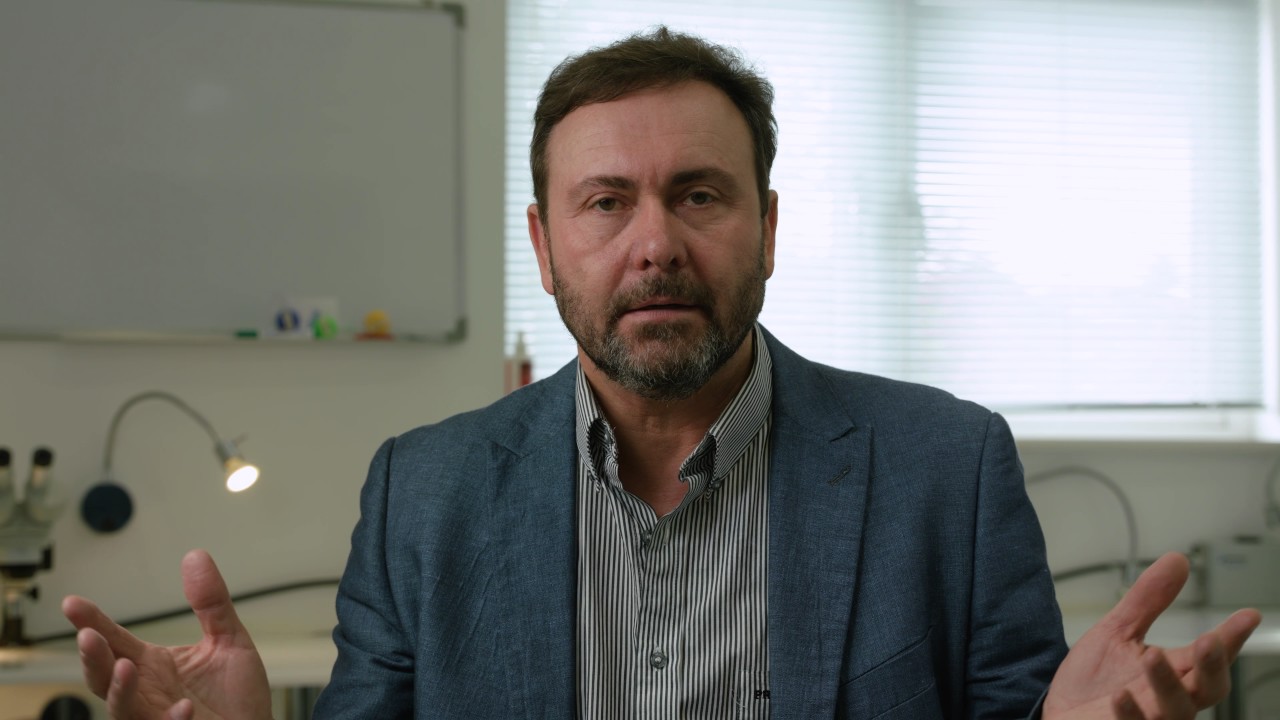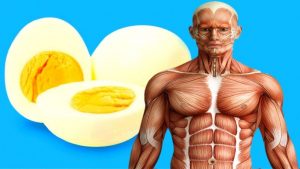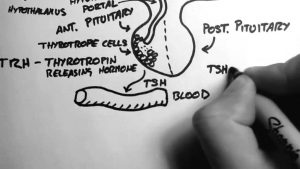The medical term for male pattern baldness, is Alopecia or Androgenetic Alopecia. This condition involves the shrinking of hair follicles on the scalp, and the actual thinning of hair strands (causing a thinner appearance of hair growth), due to the smaller size of the follicle. The hair follicles will eventually become so small that there is little to no hair growth, and usually occur on the temples or back / crown of head. Androgenetic Alopecia is caused by a combination of genetics and how your hair follicles react to certain male hormones in the scalp. Androgenetic Alopecia – Cause and Process Androgenetic Alopecia, or more commonly known as Male Pattern Baldness, is the most common cause of hair loss in men. This condition is caused by Androgen receptors which are found on the hair follicles, which we inherit. A male hormone (DHT) has an affinity with these Androgen receptors, binds with them, and causes a process called miniaturization. This makes the hair follicles smaller over a period of time, and eventually the hair follicles get so small that they disappear. DHT comes from the male hormone testosterone, and is converted to DHT by an enzyme called 5α-reductase. The Androgenetic Alopecia process affects the hair shafts, making the hair shaft thinner and the hair shorter, which is called miniaturization. Over a period of time, the hair shaft loses its calibre, getting smaller and smaller as the miniaturization progresses. The process is mediated by genetic code, and this genetic code is basically why we exist in this world, which is quite a big thing. Thus we cannot simply take on the process of Androgenetic Alopecia by just implementing a small series of medication or treatments. It’s a lifelong process if you want to take on the genetic code, and therefore it is an important concept to understand. There is a little muscle attached to the arrector pili, called the arrector pili muscle to the hair follicle. In this muscle, through its blood supply, the stem cells arrive that create the follicle and the hair shaft. In the miniaturization process, at some point the arrector pili muscle disappears, which is ultimately the point of no return for the hair follicle, as the follicle also disappears. Fortunately there are various ways that we can remedy that situation through a combination of non-surgical and surgical treatments. For more information, visit: https://www.hair-skin-wellness.com/hair-restoration/

Causes of Androgenetic Alopecia
- Post author:
- Post published:May 1, 2021
- Post category:Uncategorized
- Post comments:0 Comments
You Might Also Like

How much PROTEIN do we need DAILY? (Hindi / Punjabi)

If You Eat 2 Eggs at Breakfast For a Month, This is What Happens to Your Body
Rear Deltoid-10

Skinny Fat Explained – Dealing with Being Skinny but Belly Fat Lingers

Bodybuilding Nutrition, Diet Recipes & Workout – 18

A Healthy Guide to Good Nutrition | What is Nutrition | Nutritional Information

Lateral Raises-13

What Is The Definition Of Basal metabolic rate Medical Dictionary Free Online

Ophthalmology Video – 2

How to Lose Arm Fat – Get rid of Flabby Arms in 1 WEEK, Easy exercise to reduce arm fat

Dips – Triceps Version – Tricep Exercise – Bodybuilding.com

Intense No Equipment Upper Body Workout – At Home Upper Body Strength Without Weights

Branches of Physiotherapy Video – 2

What to Eat Before and After Workout at Gym | bodybuilding tips

Insulin peak, onset, and duration memory trick

One Direction – Perfect (Official Video)

Science – How food is digested – 3D animation – English

Hepatic & Liver Nutrition Video – 1

Step Ups – Tutorial

Critical Care Medicine Video – 4

Pec Deck Machine: Chest Workout (Burns 94 Calories)

Canoeing Video – 2

Amino acids in biomolecules | Organic Chemistry | IIT JEE | Vineet Khatri | ATP STAR

Dead Hang Chin Up With 90 Lbs Calibrated Plates

Squat-2

CT Angiography at Saifee Hospital Mumbai

Progressive Muscle Relaxation – Guided Meditation

Why are Vitamins Important? + more videos | #aumsum #kids #science #education #children

Tips for Pre & Post Workout Meals

Muscle Building Workout & Squats Video -47

Gynecology Video – 2

Study: supplements lead to increase in liver damage

POST WORKOUT Nutrition Explanation in Tamil | What to eat after workout?

Difference Between Hypothyroidism and Hashimoto’s

Thyroid Hormone 1 – Control

Standing One Arm Dumbbell Press – 90 lbs for 6

Fat Burning Cardio Workout – 37 Minute Fitness Blender Cardio Workout at Home

Insanity Nutrition Plan – Calories You Need For This Workout

GLUCOSE MONITORING with the HELO

Behrouz – The Biryani that was Worth a War, is Definitely Worth a Try! Use Code BHR15 & Get 15% Off

Chances of pregnancy with Gonadotropin and HCG injection – Dr. Sangeeta Gomes

